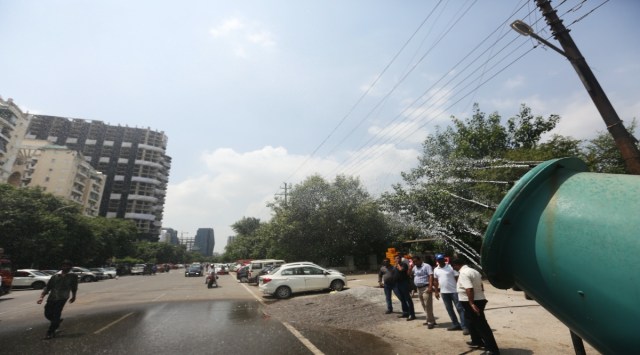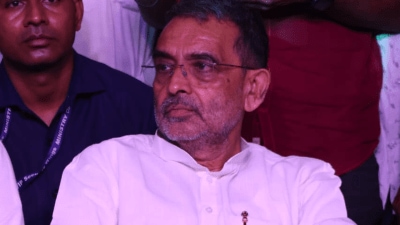With the Supertech twin towers set to be demolished, doctors warn against people going to the vicinity immediately afterwards, especially those who might have existing respiratory conditions. Experts say that the demolition is likely to increase particulate matter, PM10, in and around the site, which can lead to allergic reactions in the healthy and aggravation of symptoms in those who have respiratory diseases.
How can demolition-related pollution affect our health?

Children and those with existing respiratory conditions are likely to be the most affected due to the increase in pollution levels. “Those with asthma, COPD (chronic obstructive pulmonary disease), or fibrosis may face breathing difficulty when the dust level shoots up. But it can also lead to acute coughing, wheezing,and breathlessness in healthy individuals,” said Dr Nevin Kishore, head of bronchology and respiratory medicine, Max Hospital.
He also said people with dust allergies are also likely to experience aggravated symptoms. “Children are more vulnerable as their lungs are developing. Other than that, it is well documented that 10 to 15 per cent of children in Delhi have existing allergies. They might also experience allergic symptoms,” said Dr Kishore.
He said that to protect oneself, people should stay away from the area for several hours after the demolition and even then step out only with good quality masks or wet cloth, covering their mouth and nose.
What is likely to happen?
With only the bare structures of the tower having been constructed, the debris is likely to be comprised mostly of concrete. “Construction debris, especially without plaster and wood, is likely to lead to increase in the levels of coarse particles or PM10 in the air. The increase in PM2.5, that goes deeper into the respiratory system and other organs, is usually caused by burning. The coarse particles can lead to upper respiratory tract symptoms,” said Dr Sachidanand Tripathi, professor at Indian Institute of Technology-Kanpur and the coordinator for the National Clean Air Programme.
However, given that it is the rainy season, the debris is likely to settle down soon with a shower or two. “The dust would have remained suspended for longer in the summers. Now, it can hang around for maximum a week. But – and I am sure there is a plan for it – the debris needs to be removed from the area as soon as possible because it is a residential area and the dust can get re-suspended with the wind if not removed,” he added.
Story continues below this ad
Can the sudden increase in PM10 levels lead to long-term issues?
Dr Karan Madan, associate professor of pulmonary medicine at the All India Institute of Medical Sciences, said that even healthy people may experience asthma-like symptoms.
“Sudden increase in the levels of particulate matter can lead to what we call Reactive Airway Dysfunction, a condition where a person gets asthma-like symptoms after exposure to something noxious, unlike asthma that is triggered by an allergen. This can happen to absolutely healthy people too. The condition is well documented in fire fighters and other present at the World Trade Centre – of course that was an uncontrolled scenario and here the dust levels will be controlled,” said Dr Madan.
On being asked whether the condition dissipates as the dust particles reduce, he said, it does not. “The effects of sudden dust exposure can be long-lasting. It will not be life-long but it will take time to heal,” he said.





























